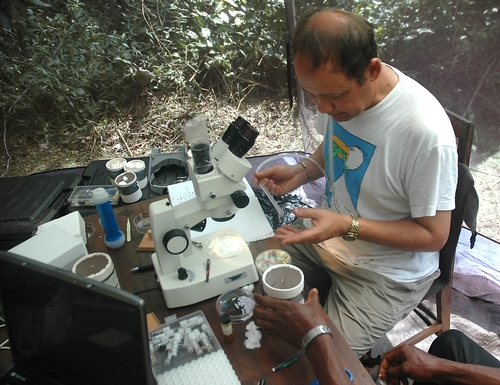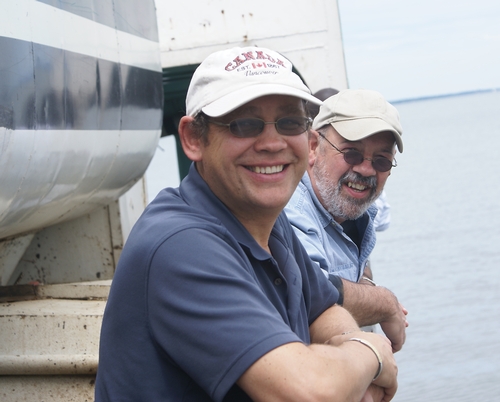It was a major milestone, sequencing the genome of Culex quinquefasciatus, the so-called “southern house mosquito.”
The research, spearheaded by UC Riverside geneticists and published in the Oct. 1, 2010 edition of Science, involved scientists from 37 other institutions. The mosquito is a medically important mosquito that transmits the West Nile virus, St. Louis encephalitis, lymphatic filariasis and other diseases.
UC Riverside research entomologist Peter Arensburger led the bioinformatics component of the multiyear research effort, launched in 2004.
Among the 76 co-authors: UC Davis mosquito researchers Anthony “Anton” Cornel and Gregory Lanzaro. Scientists in the Bruce Hammock and Walter Leal labs also participated in the research.
Cornel collected and established the mosquito colony that was sequenced. Cornel is an associate professor of entomology at UC Davis who directs the mosquito research lab at UC Kearney Agricultural Center, Parlier.
“We have multiple sub colonies of the Johannesburg colony now established in numerous insectaries worldwide,” said Cornel.
Lanzaro, a longtime collaborator with Cornel, is a professor in the School of Veterinary Medicine and former director of the UC Mosquito Research Program and the Center for Vectorborne Diseases. Both Cornel and Lanzaro serve as graduate student advisors in the UC Davis Department of Entomology. They mentor future medical entomologists.
The Hammock lab played a role in annotating and examining divergence of esterases and glutathione-S tranferases in this mosquito. Bruce Hammock is a distinguished professor of entomology. The lab of Walter Leal, professor of entomology, added expertise in chemical ecology.
Cornel hailed the research as “another milestone in mosquito genomics—we now have a full genome sequence of a third medically important mosquito, Culex quinquefasciatus.”
Said Cornel: "This is the first species within the Culex genus fully sequenced and now offers many opportunities for research on comparative genomics and post genomics between three mosquito species now fully sequenced—namely the major malaria vector, Anopheles gambiae; the major dengue virus vector, Aedes aegypti; and a major vector of West Nile virus, Culex quinquefasciatus.”
The genome of Culex quinquefasciatus, Cornel said, is much larger than the other two species--52 percent more than Anopheles gambiae and 22 percent more than Aedes aegypti. “Research on these three mosquitoes--how they find their hosts and vector diseases and the mechanisms involved--will likely blossom in the near future.”
This is indeed research to watch.
Attached Images:

Anton Cornel

Mosquito Researchers